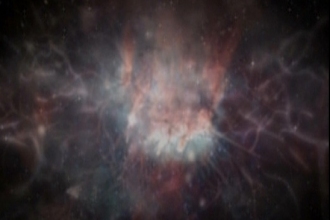
In Star Trek, an inversion nebula is a type of nebula composed of unstable plasma strands and are believed to burn out in only a few years. In the episode "Alter Ego", the USS Voyager discovered an inversion nebula that was experiencing an unusual dampening field whch was responsible for isolating each plasma strand as it ignited, averting a catastrophic chain reaction. The field was generated from a hidden space station occupied by Marayna, who used the nebula as a weapon, igniting specific plasma strands to damage Voyager.
While there are no phenomena in astrophysics specifically called inversion nebulae, real planetary nebulae do contain a great deal unstable plasma. Planetary nebulae consist of a glowing shell of gas and plasma that has been ejected from low to medium mass stars at the end of their lives. Because most of the gas in a typical planetary nebula is ionised (i.e. a plasma), the effects of magnetic fields can be significant, giving rise to phenomena such as filamentation (as can be seen in the novelty plasma lamp) and plasma instabilities (as with the so-called inversion nebulae in Star Trek).
About 1,500 planetary nebulae are known to exist in our galaxy, including the famous NGC 6853, The Dumbbell Nebula and NGC 6543, The Cat's Eye Nebula. Like Star Trek's inversion nebulae, planetary nebulae are a relatively short-lived phenomenon, lasting a few tens of thousands of years, compared to a typical stellar lifetime of several billion years. This short lifetime compared to stellar lifetimes accounts for their rarity. A typical planetary nebula is roughly 3 parsecs across.


The inversion nebula in "Alter Ego"

NGC 6853, The Dumbbell Nebula.